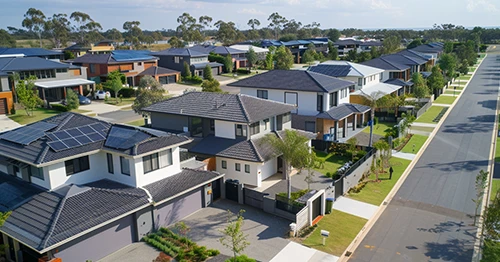Updated: 26 Dec, 2024
CoreLogic’s Home Value Index posted a second consecutive monthly rise in April 2023, increasing by 0.5%. Sydney home values increased 1.3% and led the positive turn in housing conditions. Its values are now 3% higher than at its recent trough recorded in January.
CoreLogic research director Tim Lawless said, “Not only are we seeing housing values stabilising or rising across most areas of the country, but a number of other indicators are confirming the positive shift. Auction clearance rates are holding slightly above the long-run average, sentiment has lifted, and home sales are trending around the previous five-year average.”
What Factors Are Supporting Housing Demand?
Lawless cited several factors for the positive turn, including basic supply and demand dynamics:
1. Limited Supply Amidst Burgeoning Demand
Lawless said, “A significant lift in net overseas migration has run headlong into a lack of housing supply. While overseas migration would normally have a more direct correlation with rental demand, with vacancy rates holding around 1% in most cities, it’s reasonable to assume more people are fast-tracking a purchasing decision, simply because they can’t find rental accommodation.”
2. Vendors Were On The Sidelines
Throughout the downturn, many vendors have chosen to remain inactive, resulting in lower-than-average inventory levels, which gives those who are selling more leverage in negotiations.
3. Rate Hikes Are Expected To End Soon
There are expectations that the rate-hike cycle will be over soon.
Lawless explained, “This could be contributing to a broader perception that the market has bottomed out, and for those attempting to time the market, that is considered a good time to buy.
“As interest rates stabilise, there is a good chance consumer sentiment will improve, bolstering housing market activity from both a purchasing and selling perspective.”
The current trend towards more positive housing market conditions is occurring while interest rates are still well above average. “The last time we saw housing values trending higher through a rising interest rate environment was during the mid-to-late 2000s, when the mining boom was under way. This period was also characterised by surging net overseas migration.”
Hobart has recorded the largest drop from the recent market peak among capital cities. It is down 13%. Sydney dwelling values experienced a 13.8% drop from the market peak but have risen 3% over the last three months. Brisbane recorded the third-largest decline from recent peak among capital cities, with values holding about 10.7% below their recent high point.
How Did Regional Markets Perform?
There was a strong trend toward stabilising values in the regions this quarter. Regional NSW and Regional Victoria were the only rest-of-the-state areas that recorded falls in housing values, at -0.3% and -0.4%, respectively.
Property Market Highlights
Here’s a summary of the major data points from the Australian property market in April 2023.
- Consistently low levels of advertised supply supported housing values. The flow of newly listed properties for the rolling four-week trend held at 14% below average for the same time of the year towards the end of April.
- Total advertised inventory for the four weeks ending 23 April was 21.8% below the previous five-year average for the same time this year.
- Demand, based on the estimated number of home sales, stabilised. For the three months to April, estimated capital city home sales were about 2.4% below the previous five-year average for this time of the year.
- The rental index recorded a 1.1% rise for the combined capital cities in April, while regional rents rose 0.5%.
- Growth in unit rents is topping that for house rents. Across the combined capital cities, unit rents rose 1.6% in April while house rents were up just 0.9%. The additional rental demand from overseas migration was more pronounced in innercity areas close to universities and transport hubs. There is also a lack of unit supply.
- Growth in dwelling rents reached a cyclical high, based on the rolling quarterly change, of 3.9% in Sydney and 4.2% in Melbourne. Sydney unit rents grew the fastest over the three months to April, rising 5.8%. Melbourne’s unit rents rose 5%, while Perth’s were up 4.9%.
What’s Next?
The Australian housing market appears to have moved through a short but sharp downturn, but even if that proves to be true, it doesn’t mean boom times are here again.
Lawless explained that he does not expect housing values to rise much until interest rates reduce, credit policies are eased, or housing-focused stimulus is introduced.
Housing is still unaffordable for many. The median value of a capital city dwelling remained 12% higher – a difference of roughly $83,000 – than it was at the onset of the pandemic in March 2020. Also, serviceability costs are still going up, with 42% of the median capital city income required to service a new home loan on the average home in September last year. That percentage is expected to get higher when the figure is updated this month
Finally, fixed-rate borrowers have yet to experience the full impact of the hike in the cash rate. There could be more distress selling in the months ahead and a rise in mortgage arrears.





